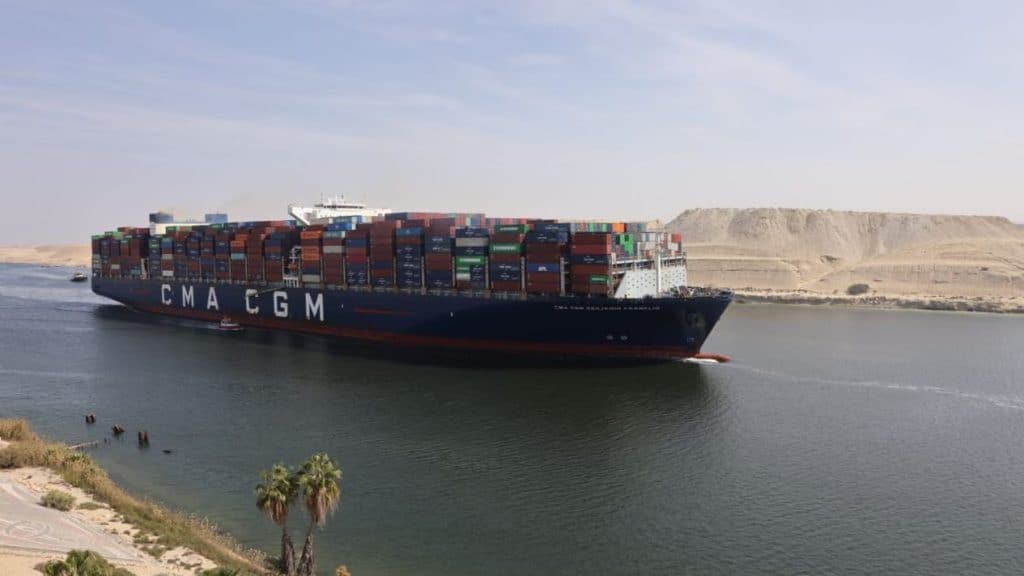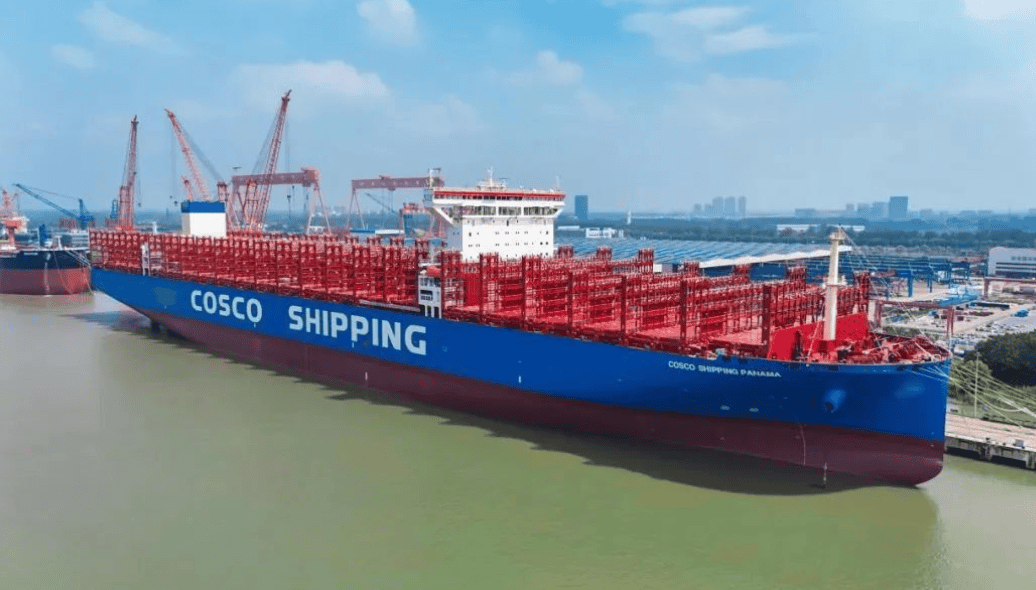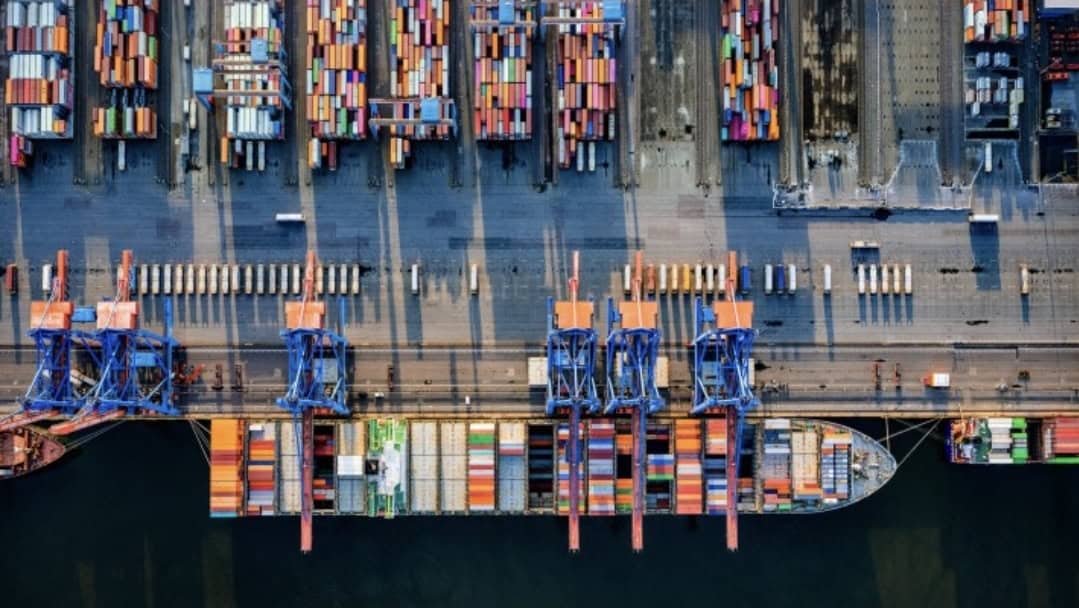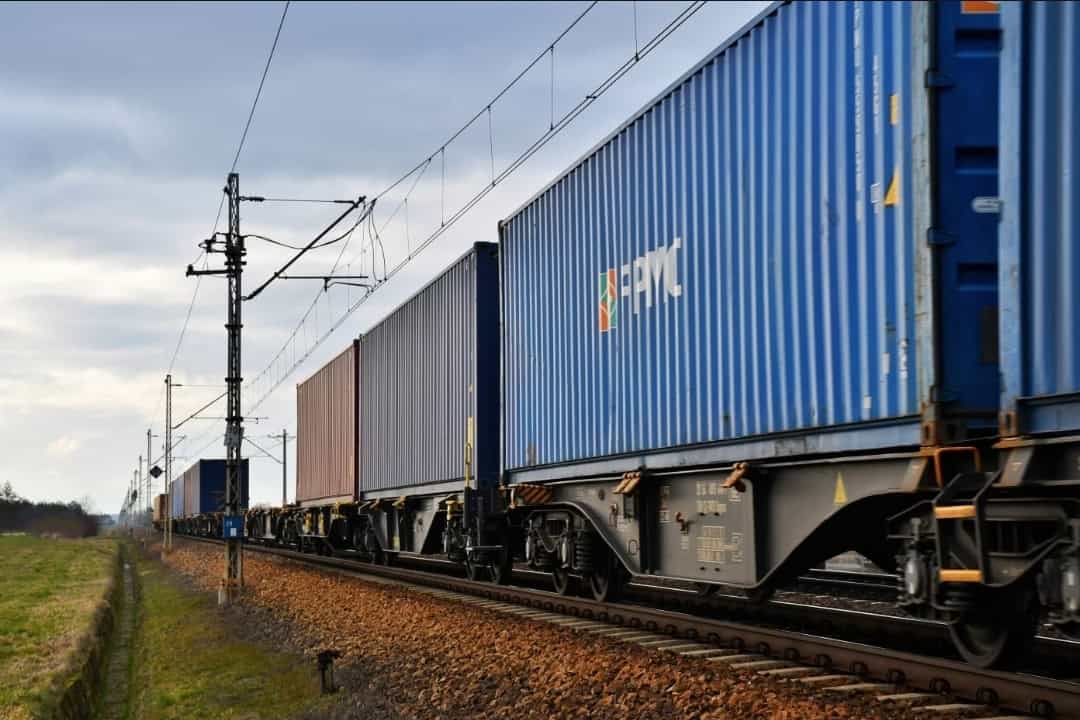November 7, 2025: CMA CGM Benjamin Franklin crosses the Suez Canal — a symbolic return of the giants
On November 7, 2025, the container ship CMA CGM Benjamin Franklin passed through the Suez Canal, setting a symbolic record as the largest vessel to transit the route in the past two years. The event is a significant signal for global maritime shipping and the entire supply chain connecting ports in Asia, the Middle East, and Europe — including rail–port terminals in our region.
The giant returns to the route
Built in 2015, CMA CGM Benjamin Franklin belongs to the class of ultra-large container vessels (ULCVs). Its technical specifications remain impressive:
Length: 399 meters
Width: 54 meters
Draft: 13.5 meters
Deadweight: approx. 177,000 tons
Capacity: 17,859 TEU (20-foot containers)
These dimensions place the Benjamin Franklin among the largest ships in the world. Although there are vessels with capacities exceeding 24,000 TEU, many of them have avoided the Suez Canal over the past two years due to instability in the Red Sea region.
The passage of this vessel through the canal thus marks both a symbolic and practical return of the world’s largest ships to this strategic maritime route.
Suez Canal back in play
The Suez Canal, linking the Mediterranean Sea with the Red Sea, is one of the key arteries of global trade. About 12% of global trade volume passes through this 193-kilometer route. Any disruption — such as the infamous Ever Given incident in 2021 — reverberates throughout the world’s logistics networks.
In recent years, the situation has been further complicated by security threats in the Red Sea and Gulf of Aden, prompting many shipowners to take the longer route around Africa, via the Cape of Good Hope. However, this detour adds 10–12 days to transit time and increases fuel costs by hundreds of thousands of dollars per voyage.
In response, the Suez Canal Authority (SCA) introduced in 2025 a package of discounts, incentives, and promotions to encourage the return of large vessels. The passage of CMA CGM Benjamin Franklin is a direct result of this policy and the improved security situation in the region.
A signal to the entire shipping market
Industry experts emphasize that this voyage carries significance beyond the symbolic. It confirms that the Suez route is once again fully operational for ships exceeding 15,000 TEU.
According to Egypt’s Ministry of Transport, additional crossings by large vessels — including CMA CGM Zheng He and MSC Mirjam — are already scheduled to follow. This marks a gradual return to normality along the Asia–Europe trade corridor.
From a logistics perspective, this reopening of capacity allows for smoother container flows and greater supply chain stability — helping to normalize transport costs and improve the rhythm of intermodal networks across Europe.
Implications for Europe and Poland
The transit of large ships through the Suez Canal has a direct impact on the European economy. Via this route, goods from China, South Korea, India, and Malaysia reach ports in the North Sea, Baltic, and Adriatic basins — and from there move inland, often by rail.
Polish ports — in Gdańsk, Gdynia, and Szczecin–Świnoujście — are vital nodes in this system. The DCT Gdańsk terminal regularly handles vessels of the Benjamin Franklin class, including ships operated by CMA CGM, MSC, and Maersk. Their presence brings larger intermodal cargo volumes, which are then transferred to rail networks and distributed to terminals across central and southern Poland.
Restoration of full Suez Canal capacity may therefore lead to:
increased container volumes arriving in Northern Europe,
higher utilization of rail infrastructure in Poland,
strengthened intermodal corridors: Baltic–Adriatic and Baltic–Black Sea,
stabilized freight rates and reduced cost pressures for rail operators and logistics centers.
Suez and intermodality – the interdependence of sea and rail transport
Modern logistics is a system of interconnected vessels. When maritime traffic stalls — rail suffers. When ports congest — inland terminals lose efficiency. That’s why any signal of stabilization on major sea trade routes also benefits the rail sector.
The transit of Benjamin Franklin signals that we can expect greater predictability and smoother container flows, which in turn helps in scheduling, rail capacity planning, and intermodal terminal operations in Poland.
In the long run, such developments strengthen the case for investing in freight rail — particularly along the TEN-T corridors linking Baltic ports with Southern Europe.
Security and the future of shipping
While the CMA CGM Benjamin Franklin crossing is a success, experts remind us that stability in the Red Sea region still depends on geopolitical developments. Shipowners remain cautiously optimistic, hoping for a lasting restoration of safe navigation.
The Suez Canal Authority has announced further investments in channel modernization and digital traffic management, aiming to accommodate even larger vessels in the future.



